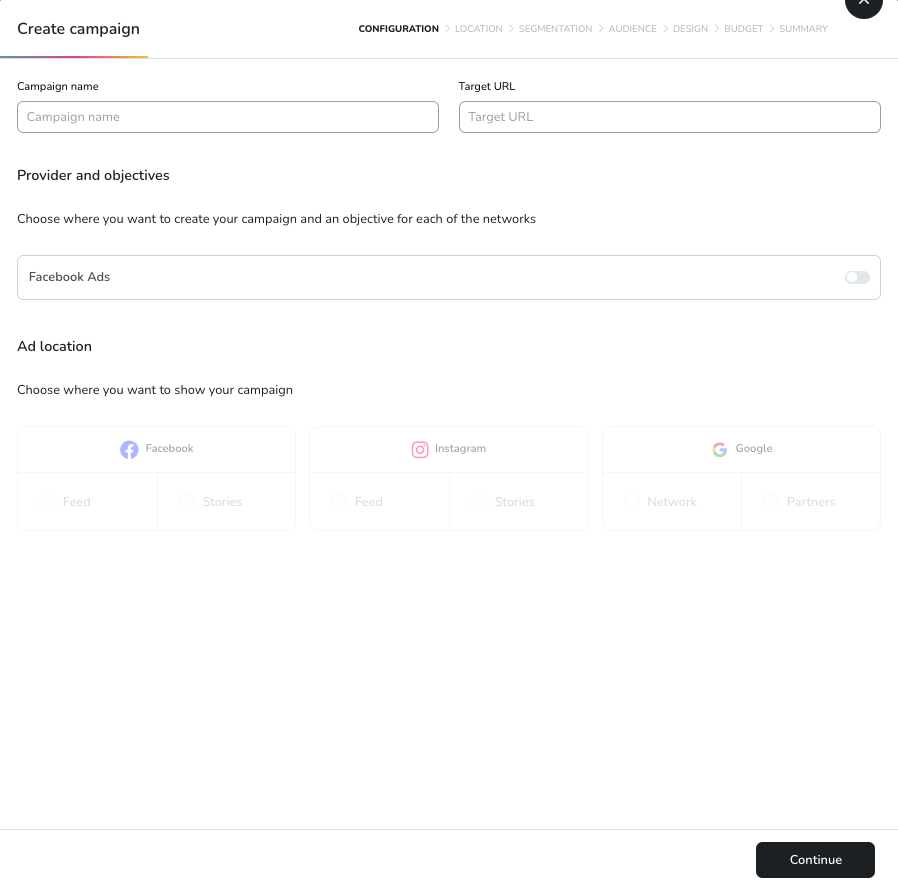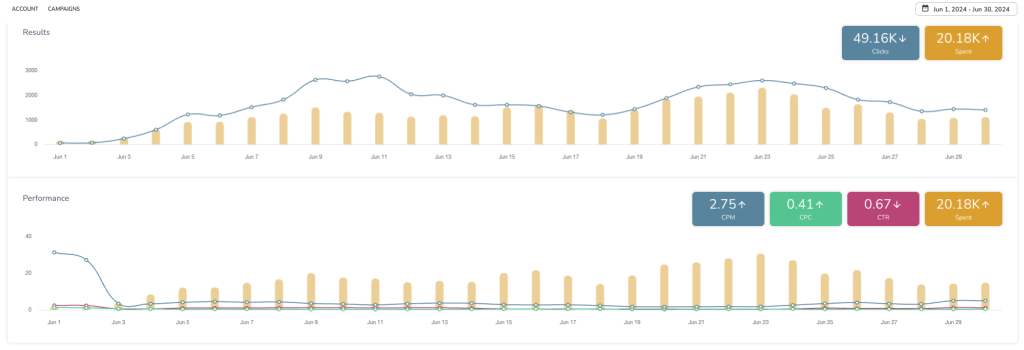What is CPL? Cost per Lead
As a digital marketer, your goal is to acquire new customers cost-effectively. This is where cost per lead comes in. CPL is a key metric that tracks the average cost of obtaining a lead – someone who has shown interest by sharing their contact info.
CPL is a crucial component of the Cost per Acquisition (CPA) model, which measures the overall cost of converting a lead into a paying customer. By monitoring and optimizing CPL, you can ensure your marketing investments deliver maximum returns and efficiently grow your customer base.
Below, we’ll explore the meaning of CPL. Learn how to calculate it, and discover strategies to reduce your cost per lead. Understanding and mastering CPL is essential for scaling customer acquisition to profitability.
CPL Meaning – Cost per Lead Definition
Cost per lead is a key metric in digital marketing that helps businesses track the cost of acquiring potential customers. It’s a crucial component of the Cost per Acquisition (CPA) model, which measures the overall cost of converting a lead into a paying customer.
CPL represents the average cost of obtaining a new lead, which is someone who has expressed interest in your products or services by providing their contact information. This could include their email address, phone number, or other relevant details that allow you to follow up and potentially convert them into a customer.
What is a lead?
A lead is a prospective customer who has taken the first step towards potentially making a purchase. They may have signed up for a newsletter, downloaded a whitepaper, or filled out a form on your website. By capturing their information, you can nurture the relationship and guide them through the sales funnel.
Lead forms can be customized to collect the specific information that is most valuable to your business, such as name, email, phone number, or even more detailed questions about their needs and preferences. The more relevant information you can gather, the better you can tailor your marketing efforts and increase the chances of converting them into paying customers.
When to Use CPL
Cost per lead is most useful for businesses focused on lead generation, such as B2B companies, professional services firms, and companies with high-consideration purchases. It allows them to understand the cost-effectiveness of their marketing campaigns in generating new potential customers.
CPL can help you achieve two main goals:
Increase customers
CPL can help you reach more potential customers by allowing you to target them across multiple touchpoints, such as websites related to your business, social media, or point of sale. While the cost of this type of advertising may be higher than other branding campaigns like CPM (cost per thousand impressions), it allows you to capture the contact information of interested prospects that you can then use in email marketing and other lead nurturing efforts.
Earn money with website publicity
If you have a popular blog or website, you can generate revenue by allowing other businesses to use your platform to acquire new leads in exchange for payment. The more traffic and engagement you have on your site, the more valuable it becomes as a lead generation channel for other companies.
Cost per Lead Calculation
To calculate the cost per lead of an ad campaign, divide the total cost of the campaign by the total number of leads acquired from the same campaign.
💡 Cost per Lead = Total Spent / Total Leads Generated 💡
For example, if a company spent $50,000 on a marketing campaign that generated 2000 leads, the cost per lead would be $25.
Different Advertising Metrics: CPA vs. CPC vs. CPM vs. CPL
The world of online advertising offers a variety of metrics to measure the success of your campaigns. Understanding the differences between these key metrics can help you choose the right approach for your business goals.
Let’s dive deeper into CPA, CPC, CPM, and CPL:
Cost per Acquisition (CPA)
CPA, or Cost per Acquisition, measures the cost to acquire a new paying customer or complete a desired action, such as a sale or a lead. This metric is focused on the ultimate conversion, making it a valuable metric for businesses that prioritize revenue generation and profitability. CPA is best suited for ad campaigns that aim to drive direct sales or high-value conversions.
Cost per Click (CPC)
CPC, or Cost per Click, measures the cost for each click on an advertisement. This metric is focused on driving traffic to a website, making it a useful metric for campaigns that want to increase website visits, engagement, and potential leads. CPC is particularly effective for campaigns that target users who are actively searching for or interested in your products or services.
Cost per Mille (CPM)
CPM, or Cost per Mille (which means “cost per 1,000 impressions”), measures the cost for every 1,000 times an advertisement is displayed. This metric is focused on brand awareness and is best suited for campaigns that aim to increase visibility and reach, rather than direct conversions. CPM is often used in display advertising, social media advertising, and other channels where the primary goal is to build brand recognition and exposure.
Ways to Reduce CPL
Reducing your cost per lead is crucial for maximizing the return on your marketing investment. However, it’s important to approach this process gradually rather than making drastic changes. By implementing small, data-driven optimizations over time, you can steadily lower your CPL without causing sudden spikes in costs.
To achieve the greatest impact, focus your efforts on the key areas that drive lead generation, such as keywords, ads, and landing pages. Here are some effective strategies to help you reduce your CPL:
Refine your keyword strategy
When it comes to keywords, quality is more important than quantity. Instead of targeting a wide range of broad keywords, focus on high-intent, long-tail keywords that are highly specific to your products or services. This approach allows you to reach prospects who are further along in the buying process and more likely to convert.
Additionally, consider bidding more aggressively on these high-value keywords to maximize your return on investment (ROI). Don’t forget to utilize negative keywords to filter out irrelevant traffic and keep your budget focused on the most profitable keywords.
Optimize landing pages
Your landing pages are the foundation of your lead generation efforts, so it’s crucial to ensure they are tailored to your specific campaigns and audience needs. By creating targeted landing pages, you can better meet the needs of your potential leads and encourage them to convert.
Incorporate a clear call-to-action (CTA) that encourages users to take the desired action, such as filling out a lead form. Experiment with different designs and messaging using A/B testing to identify the most effective approach for capturing leads and maximizing conversions.
Utilize retargeting
Retargeting is a powerful tool for reducing CPL. By re-exposing potential customers to your ads using cookies, you can remind them of your product or service and encourage them to convert. This strategy helps you stay top-of-mind with interested prospects and increases the likelihood of them completing a conversion.
Test and refine your strategy
Reducing CPL is an ongoing process that requires close monitoring and incremental changes based on data. Regularly analyze your campaign performance and experiment with different ad copy, targeting, landing pages, and other elements to identify opportunities for improvement. Utilize A/B testing to compare the effectiveness of various approaches and make data-driven decisions to optimize your lead generation efforts.
Metricool for Ad Campaign Management
Metricool allows you to oversee your ad campaigns for Google, TikTok, and Meta (Facebook and Instagram) Ads all from a single platform, eliminating the need to constantly switch between different interfaces. This streamlines the entire process of creating, optimizing, and analyzing your campaigns, saving you valuable time.
✅ Create successful ad campaigns:
Metricool’s intuitive campaign builder guides you through the process of setting up effective ad campaigns, whether you’re a seasoned marketer or just starting out.
Key features include:
- Configuring campaigns with the right objectives and targeting
- Building out ad groups and individual ads
- Managing budgets and bids

✅ Optimize performance and lower costs
Metricool equips you with the tools to enhance your ad performance and reduce your cost per lead:
- Comparing results across your Google and Facebook campaigns to identify top performers
- Directly adjusting bids, budgets, and ad status within the platform
- Analyzing quality scores for your Google Ads to improve relevance

✅ Ad campaign analytics and reporting
Metricool makes it simple to analyze your ad performance with:
- Detailed metrics for campaigns, ad groups, and keywords
- Interactive charts to visualize results
- Custom reports you can download
- The ability to compare performance over time or between strategies

Start Optimizing Your Ads
Create and manage your ad campaigns, adjust your advertising strategy, and gain valuable data-driven insights.
